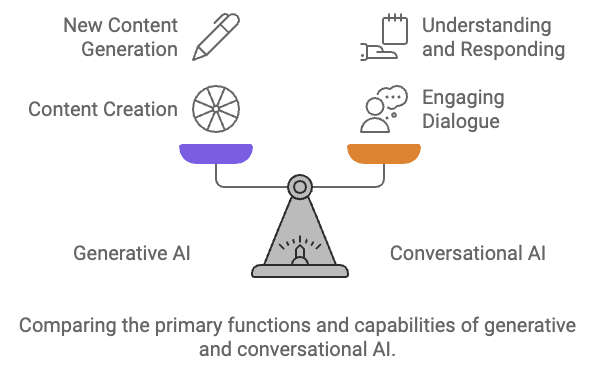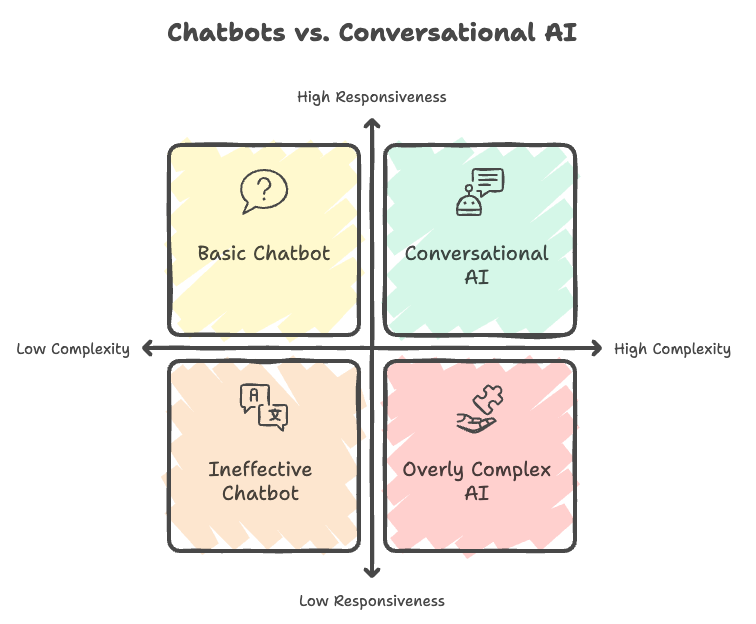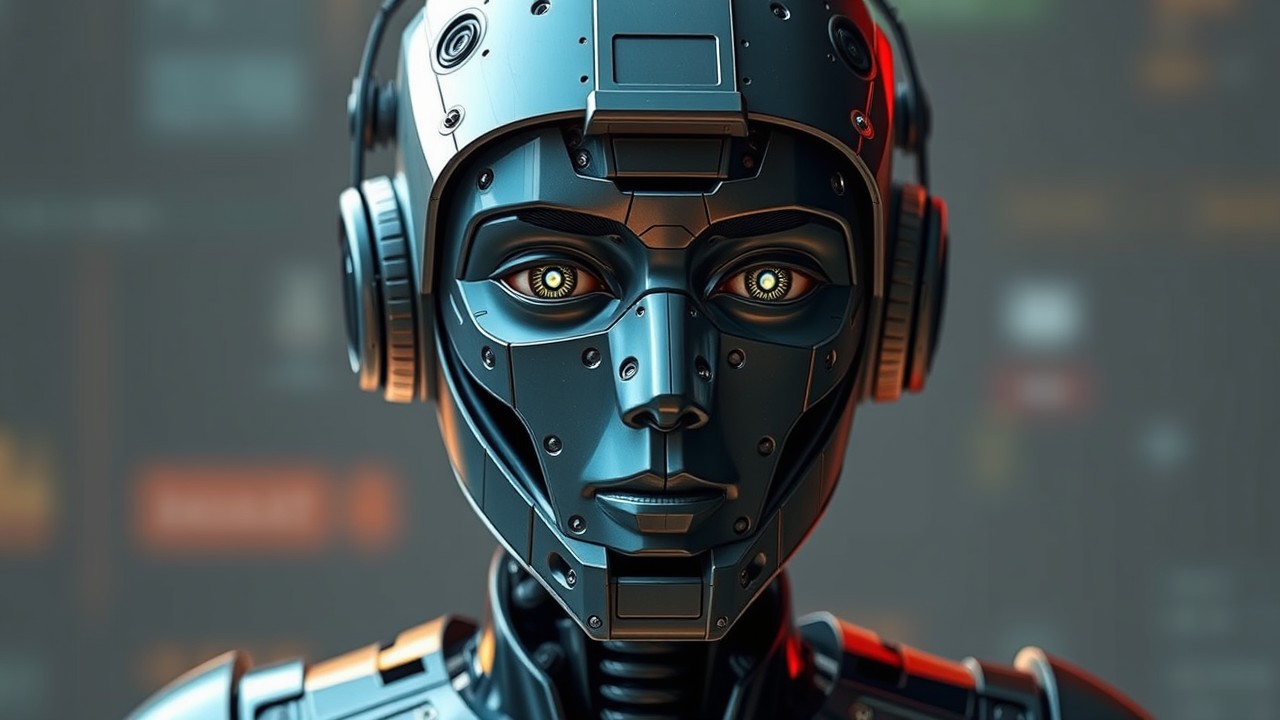Picture this: You’re having a lively discussion with your computer about the meaning of life, the universe, and everything. It’s like having a heart-to-heart with your best friend, except your friend is a machine and has an IQ of, well, infinity. Welcome to the wild and wonderful world of conversational AI!
So, What Exactly is Conversational AI?
At its core, conversational AI is all about making computers talk like humans. It’s like teaching a robot to ditch the monotone and embrace its inner chatterbox. With the magic of natural language processing (NLP) and machine learning, these AI systems can understand, interpret, and respond to human language in a way that feels almost eerily natural.
But here’s the really cool part: conversational AI can actually remember what you’ve said earlier in the conversation. It’s like having a friend who never forgets your inside jokes or that embarrassing story you told them three weeks ago. This is a big deal because it means the AI can provide much more relevant and helpful responses, rather than just spitting out generic, pre-programmed answers.
Generative AI vs. Conversational AI: A Tale of Two AIs
Now, you might be thinking,
Wait, isn’t all AI pretty much the same?
Well, not quite. There’s a big difference between generative AI and conversational AI.
Generative AI is like the artsy cousin of conversational AI. It’s all about creating new content – think AI-generated essays, images, or even symphonies. It’s pretty mind-blowing stuff, but it’s not really designed for back-and-forth conversation.
Conversational AI, on the other hand, is the social butterfly of the AI family. Its whole purpose is to engage in witty repartee with us mere mortals. It’s less about generating new content from scratch and more about understanding what we’re saying, providing useful info, and keeping the conversation flowing like a well-oiled machine.
But here’s where it gets really interesting: some of the most advanced conversational AI systems out there are starting to blur the lines between generative and conversational AI. It’s like they’re the love child of a novelist and a talk show host – they can generate human-like responses while still maintaining that all-important back-and-forth flow.

The Rise of Generative AI: A Creative Revolution
Now, let’s take a moment to dive deeper into the fascinating world of generative AI. It’s like the Renaissance of the AI world, except instead of painting masterpieces, these AI systems are churning out mind-blowing content faster than you can say “Mona Lisa.”
Generative AI is a broad term that encompasses any AI system capable of creating new content, from text to images to music and beyond. It’s powered by complex algorithms and deep learning models that allow the AI to understand and mimic patterns in vast amounts of data.
As of writing this article, one of the most famous examples of generative AI is GPT-4o, a language model so powerful it could probably write a bestselling novel in its sleep (if AI systems could sleep, that is). Developed by OpenAI, GPT-4o has been used for all sorts of creative tasks, from writing articles and poetry to generating code and even creating memes.
But generative AI isn’t just limited to text. There are also AI systems like DALL-E and Midjourney that can generate stunning visual art and images from textual descriptions. It’s like having a personal artist on call 24/7, without the pesky need for food or sleep.
As generative AI continues to advance, it’s opening up new possibilities for creatives and businesses alike. Imagine being able to generate a full marketing campaign, complete with images and copy, with just a few prompts. Or creating personalized content at scale for each and every customer. The potential applications are endless, and we’re just scratching the surface of what’s possible.
Conversational AI: The Friendly Face of AI
So, we’ve established that conversational AI is like the social butterfly of the AI world. But what exactly makes it so darn friendly and approachable?
For starters, conversational AI is all about that natural, human-like interaction. It’s not just spitting out pre-programmed responses or following a rigid script. Instead, it’s using natural language processing and machine learning to truly understand the nuances of human conversation.
This means that conversational AI can handle all the quirks and curveballs that come with real human interaction. It can understand context, pick up on tone and emotion, and even throw in a well-timed joke or two. It’s like having a witty, knowledgeable friend who’s always ready to lend an ear (or a microphone, as the case may be).
Some of the most common examples of conversational AI that you might encounter in your daily life include:
- Virtual assistants like Siri, Alexa, and Google Assistant, who are always ready to help you out with a quick question or task
- Chatbots like ChatCube on websites and in messaging apps, providing instant customer support and guidance
- Voice-based systems for customer service, allowing you to resolve issues and get help without ever having to pick up the phone
- AI-powered email assistants that can help you manage your inbox and craft the perfect response
The beauty of conversational AI is that it’s constantly learning and evolving based on every interaction. Every conversation is a chance for the AI to get a little bit smarter and a little bit better at understanding and responding to human language. It’s like having a friend who’s always growing and improving, without ever getting tired of your endless chatter.
Chatbots vs. Conversational AI: The Battle of the Bots
So, how does conversational AI stack up against its old-school cousin, the chatbot? It’s a bit like comparing a flip phone to a smartphone.
Chatbots have been around since the dawn of the internet (okay, maybe not quite that long, but you get the idea).
They’re like the fast food of the AI world – quick, cheap, and a little unsatisfying. They’re great for simple queries like “What are your store hours?” but try to engage them in a deep discussion about the nature of consciousness and they’ll probably just stare at you blankly.
Conversational AI, on the other hand, is like the gourmet meal of the AI world. It uses all sorts of fancy algorithms and natural language processing to truly understand what you’re saying and provide intelligent, relevant responses. And if you throw a curveball and ask about something it doesn’t know? It can gracefully admit its ignorance and even try to find related info to help you out. It’s like having a genius librarian at your beck and call.

ChatCube: The Conversational AI for your Business
Alright, folks, hold onto your hats because we’re about to take a wild ride into the world of DIY chatbots!
Imagine this: You’re running a business, and you’ve got customers coming at you from all angles with questions, concerns, and the occasional existential crisis. Wouldn’t it be nice to have a friendly, knowledgeable AI sidekick to help you out?
Enter ChatCube, the superhero of the chatbot world!
With ChatCube, you can create your very own ChatGPT-like chatbot in less time than it takes to make a cup of coffee (and trust me, I’ve timed it). This no-code tool is like having a genie that grants you three wishes:
- Custom Chatbots Trained on Your Data: ChatCube lets you train your chatbot on your own data, so it can answer customer support questions and generate leads like a pro. It’s like having a miniature version of ChatGPT that’s tailored specifically to your business!
- Smart Responses with Human Handoff: Just like ChatGPT, ChatCube’s chatbots can provide intelligent, human-like responses to customer queries. But here’s the kicker: if the chatbot is ever unsure, it can seamlessly hand off the conversation to a human agent. It’s like having a tag-team of AI and human brilliance!
- Easy Retraining with New Content: As your business grows and evolves, so should your chatbot. With ChatCube, you can retrain your chatbot with new content with just a single click. It’s like giving your chatbot a superhero serum that instantly updates its knowledge and skills!
But wait, there’s more!
Not only is ChatCube incredibly powerful, but it’s also ridiculously easy to use. You don’t need to be a tech wizard or have a PhD in AI to create your own chatbot. ChatCube’s intuitive interface makes it a breeze for anyone to set up and deploy a chatbot in minutes.
So, whether you’re a small business owner looking to streamline customer support or a marketing maven seeking to generate more leads, ChatCube has got your back. It’s like having a secret weapon in your business arsenal that’s ready to tackle any challenge thrown its way.
In a world where conversational AI is becoming increasingly important, ChatCube is the hero we all need. It’s making the power of ChatGPT accessible to businesses of all sizes, and it’s doing it with style, ease, and a whole lot of fun.
So, what are you waiting for? Join the ChatCube revolution and give your business the AI sidekick it deserves!
The Future of Conversational AI: Talking to Everything?
As conversational AI gets smarter and smarter, it’s starting to pop up everywhere. Imagine a world where you can have a deep philosophical discussion with your toaster, or get relationship advice from your vacuum cleaner. Okay, maybe that’s a bit far-fetched (although I wouldn’t put it past the vacuum cleaner, those things are wise), but the possibilities are endless.
We’re already seeing conversational AI being used in customer service, healthcare, education, and more. It’s like having a personal assistant, therapist, and tutor all rolled into one. And as the technology continues to evolve, who knows what other roles it might take on?
But with great power comes great responsibility, and there are definitely some challenges to tackle as conversational AI becomes more ubiquitous. We’ve got to make sure these systems are designed in a way that’s ethical, unbiased, and transparent. Nobody wants a conversational AI system that’s secretly judging you or spilling your deepest secrets to the highest bidder.
Conclusion: A Brave New World of Conversation
So there you have it – a whirlwind tour of the wild and wacky world of conversational AI. As these systems get smarter and more sophisticated, they’re changing the way we interact with machines in some pretty mind-blowing ways.
We’re on the cusp of a new era of human-machine interaction, and conversational AI is leading the charge. It’s an exciting time to be alive, and I for one can’t wait to see what the future holds. Will we be debating the finer points of existentialism with our coffee makers? Teaching our toasters the art of sarcasm? The possibilities are endless, and I’m ready for it. Bring on the AI chatterboxes!





